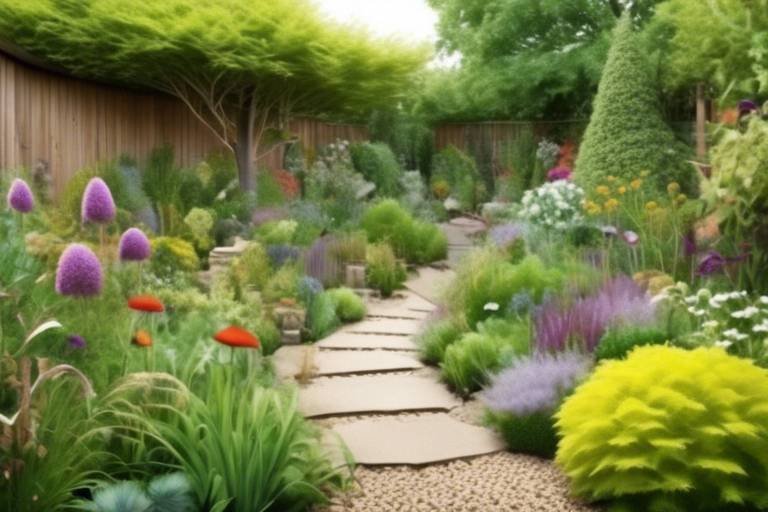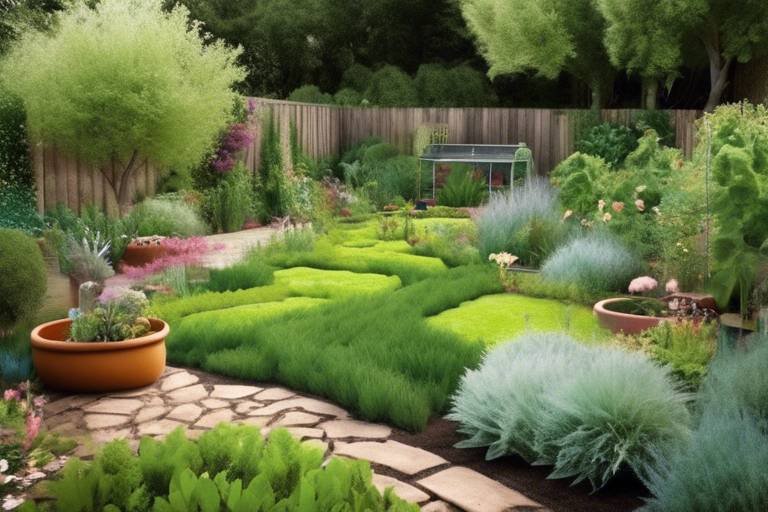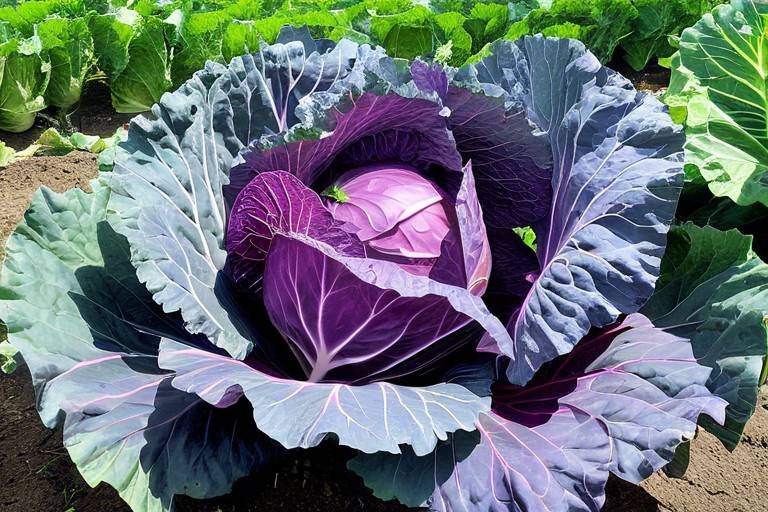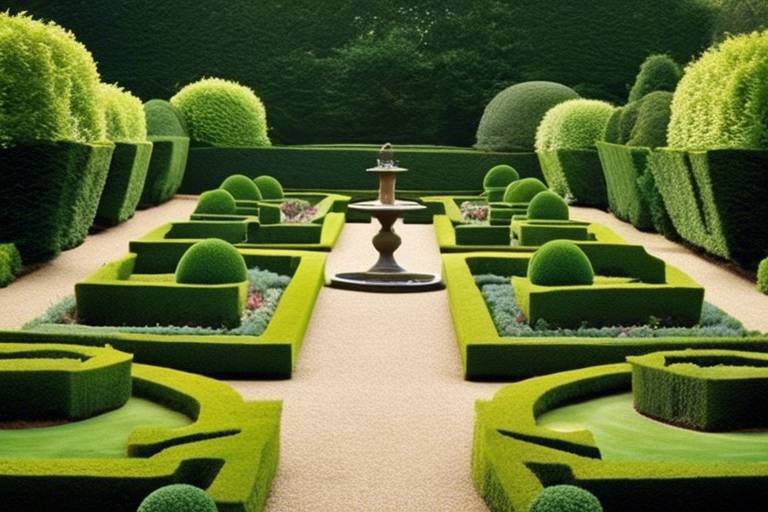Best Plants for a Mediterranean-Style Garden
When it comes to creating a Mediterranean-style garden that exudes vibrancy and charm, selecting the right plants is key. These plants not only thrive in the sunny and dry conditions typical of the Mediterranean region but also add a touch of exotic beauty to any outdoor space. Let's explore some of the best plants that can transform your garden into a Mediterranean paradise.
One iconic plant that immediately brings to mind the Mediterranean landscape is the Olive Tree. With its silvery-green foliage and delicious fruits, olive trees not only provide shade but also add a sense of ancient beauty to any garden. Their drought tolerance and hardy nature make them a perfect choice for a Mediterranean-style garden.
Lavender, with its fragrant blooms and calming purple hues, is another must-have for a Mediterranean garden. This aromatic herb thrives in the sun-soaked soil of the region, attracting pollinators and releasing a soothing aroma that enhances the overall ambiance of the garden.
Rosemary, a versatile herb known for its culinary uses, is also a favorite in Mediterranean gardens. Its aromatic foliage, delicate flowers, and resilience in hot, dry conditions make it a valuable addition to any landscape seeking to capture the essence of the Mediterranean.
For a burst of color and vibrancy, Bougainvillea is an excellent choice. This climbing plant, with its showy bracts in various shades, adds a pop of color to walls, fences, and pergolas, creating a stunning visual display that is synonymous with Mediterranean landscapes.
Agapanthus, also known as Lily of the Nile, brings elegance and grace to Mediterranean gardens with its striking clusters of blue or white flowers. Its low maintenance requirements and tall stems make it a perfect choice for adding vertical interest and beauty to any garden.
Cypress trees, with their tall and slender appearance, offer structure and privacy to Mediterranean landscapes. Their evergreen foliage and distinctive conical shape add a sense of timelessness and beauty, making them a classic choice for creating a Mediterranean-style garden.
Verbena, with its colorful clusters of flowers, is a versatile and drought-tolerant plant that attracts butterflies and bees, adding life and movement to the garden. Its ability to thrive in the sunny and dry conditions of the Mediterranean makes it an ideal choice for creating a lively and vibrant outdoor space.
Lastly, Thyme, with its aromatic foliage and tiny flowers, is perfect for edging pathways and adding texture to the garden. This low-growing herb thrives in well-drained soil and sunny conditions, making it a practical and attractive choice for Mediterranean-style landscapes.

Olive Trees
Olive trees, with their iconic silvery-green foliage and ancient beauty, are a quintessential feature in Mediterranean-style gardens. These majestic trees not only add a touch of charm to any outdoor space but also offer practical benefits. Providing ample shade during the scorching summer months, olive trees create a tranquil oasis where you can relax and unwind. Additionally, these trees bear fruits that are not only delicious but also rich in flavor and nutrients, perfect for culinary enthusiasts looking to incorporate fresh ingredients into their dishes.
When it comes to landscaping, olive trees serve as focal points, adding a sense of history and timelessness to the garden. Their twisted trunks and gnarled branches evoke a sense of antiquity, reminiscent of the Mediterranean countryside. Whether planted in rows to create a dramatic avenue or strategically positioned to frame a picturesque view, olive trees bring a sense of elegance and sophistication to any outdoor setting.
In terms of maintenance, olive trees are relatively low-maintenance once established. Thriving in the sunny and dry conditions typical of the Mediterranean region, these trees require minimal watering and are drought-tolerant, making them ideal for water-wise gardening. Their resilient nature and adaptability to various soil types further enhance their appeal, allowing them to thrive in a wide range of environments.
For those looking to attract wildlife to their garden, olive trees are a magnet for birds and beneficial insects. The small, fragrant flowers of the olive tree attract pollinators, contributing to a healthy ecosystem within the garden. Additionally, the presence of olive trees can create a sense of harmony and balance, blending the natural beauty of the landscape with the architectural elements of the garden.

Lavender
Lavender, with its delicate purple blooms and enchanting fragrance, is a quintessential plant in Mediterranean gardens. This aromatic herb not only adds a pop of color but also attracts beneficial pollinators such as bees and butterflies, enhancing the overall biodiversity of the garden. Thriving in the sun-drenched and well-drained soil characteristic of the Mediterranean region, lavender symbolizes relaxation and tranquility, infusing the garden with a sense of calmness and serenity.

Rosemary
Rosemary, a versatile herb beloved for both its culinary and ornamental qualities, is a quintessential plant in Mediterranean-style gardens. Its aromatic foliage, adorned with delicate blue flowers, not only adds visual interest but also fills the air with a refreshing scent that evokes images of sunny Mediterranean landscapes.
One of the key attributes of rosemary is its resilience in hot and dry conditions, making it a perfect fit for the Mediterranean climate. This herb thrives in well-drained soil and full sunlight, embodying the essence of Mediterranean flora with its ability to withstand drought and still flourish.
When it comes to garden design, rosemary can be used in various ways to enhance the overall aesthetic. Whether planted in herb gardens, along pathways, or in containers, its upright growth habit and evergreen foliage provide structure and texture to the landscape.
Furthermore, rosemary is a favorite among pollinators, attracting bees and butterflies with its nectar-rich blooms. This not only adds a dynamic element to the garden but also supports the local ecosystem by promoting biodiversity.
In Mediterranean cuisine, rosemary is a staple herb used to flavor a wide range of dishes, from roasted meats to savory bread. Its robust flavor profile and ability to complement other ingredients make it a versatile herb that adds depth and complexity to culinary creations.
Overall, rosemary embodies the spirit of Mediterranean gardens with its beauty, fragrance, and practicality. Whether you're looking to add a touch of Mediterranean charm to your outdoor space or simply enjoy the benefits of this remarkable herb, rosemary is a must-have plant for any garden enthusiast.

Bougainvillea
Bougainvillea, also known as "paper flower," is a stunning plant that embodies the vibrant and colorful essence of Mediterranean gardens. Its showy bracts in shades of pink, red, purple, and orange create a striking visual display that can brighten up any outdoor space. This climbing plant is not only visually appealing but also thrives in the sunny and dry conditions typical of the Mediterranean climate, making it a popular choice for adding a pop of color to walls, fences, and pergolas.

Agapanthus
Agapanthus, also known as Lily of the Nile, is a stunning plant that graces Mediterranean gardens with its elegant presence. This perennial beauty features striking clusters of blue or white flowers that sit atop tall, sturdy stems, creating a visual spectacle that captivates all who behold it. The graceful appearance of agapanthus adds a touch of sophistication and charm to any garden, making it a popular choice among gardeners seeking to enhance the beauty of their outdoor spaces.
One of the key advantages of agapanthus is its low maintenance requirements, making it a hassle-free addition to any Mediterranean-style garden. With minimal care and attention, agapanthus thrives in the sunny and well-drained soil conditions typical of the Mediterranean region, blooming profusely throughout the summer months. Its ability to withstand dry spells and neglect makes it a resilient and reliable plant for both experienced and novice gardeners alike.
Agapanthus can be effectively used in garden borders, rockeries, or as standalone focal points, adding a vertical dimension and a pop of color to the landscape. Its architectural form and vibrant blooms make it a versatile plant that complements a wide range of design styles, from traditional to contemporary. Whether planted in clusters or as solitary specimens, agapanthus never fails to make a bold statement in any garden setting.
Furthermore, agapanthus attracts pollinators such as bees and butterflies, contributing to the overall biodiversity of the garden ecosystem. Its nectar-rich flowers provide a vital food source for these beneficial insects, promoting a healthy and thriving garden environment. By incorporating agapanthus into your garden, you not only enhance its visual appeal but also support local wildlife and create a harmonious balance within the natural habitat.
In summary, agapanthus embodies the essence of Mediterranean gardening, combining beauty, resilience, and ecological benefits in one exquisite package. Whether you are looking to add a touch of elegance to your garden or create a vibrant focal point, agapanthus stands out as a top choice for transforming your outdoor space into a Mediterranean oasis.

Cypress Trees
Cypress trees are an essential element in Mediterranean-style gardens, embodying the spirit of the region with their tall, slender forms and evergreen foliage. These majestic trees not only provide a sense of structure and privacy but also contribute to the timeless beauty of the landscape. Their distinctive conical shape adds a touch of elegance and vertical interest to any garden, creating a harmonious and calming atmosphere reminiscent of the Mediterranean countryside.

Verbena
When it comes to adding a burst of color and attracting pollinators to your Mediterranean-style garden, is a top contender. This versatile plant boasts long-lasting clusters of vibrant flowers in shades of pink, purple, red, and white, creating a lively and vibrant atmosphere in any outdoor space. Not only does Verbena add a pop of color, but it also serves as a magnet for butterflies and bees, enhancing the ecological balance of your garden.
One of the key advantages of Verbena is its drought-tolerant nature, making it an ideal choice for gardens with sunny and dry conditions reminiscent of the Mediterranean climate. This plant thrives in well-drained soil and requires minimal water once established, making it a low-maintenance addition to your outdoor oasis.
Whether planted in flower beds, containers, or hanging baskets, Verbena's cascading growth habit and abundant blooms make it a versatile option for gardeners looking to add a touch of whimsy and color to their landscape. Its ability to attract beneficial insects also contributes to the overall health and vitality of your garden ecosystem.
Additionally, Verbena's fragrant flowers release a sweet aroma that can uplift the senses and create a serene ambiance in your outdoor space. This sensory experience adds an extra layer of enjoyment to your garden, making it a delightful place to relax and unwind after a long day.
To maximize the visual impact of Verbena in your garden, consider planting it in clusters or combining it with other complementary plants that share similar care requirements. By strategically incorporating Verbena into your Mediterranean-style garden, you can create a harmonious and visually appealing landscape that will be the envy of all who see it.

Thyme
Thyme, a versatile herb with a myriad of uses, is a beloved addition to Mediterranean-style gardens for its aromatic foliage and charming appearance. This low-growing herb, with its tiny leaves and delicate flowers, not only adds a pop of greenery but also releases a pleasant fragrance that wafts through the garden, creating a sensory delight for visitors. Thyme's ability to thrive in the dry, sunny conditions of the Mediterranean makes it a perfect choice for gardeners looking to add texture and fragrance to their outdoor space.
Frequently Asked Questions
- What are the key characteristics of a Mediterranean-style garden?
A Mediterranean-style garden is typically characterized by drought-tolerant plants, aromatic herbs, colorful blooms, and textured foliage that thrive in sunny and dry conditions. These gardens often feature plants that are native to the Mediterranean region and can withstand the hot, arid climate.
- How can I create a Mediterranean-style garden in a non-Mediterranean climate?
While it may be challenging to replicate the exact conditions of the Mediterranean region, you can still create a Mediterranean-style garden by selecting plants that are suited to your local climate. Look for drought-tolerant species, aromatic herbs, and plants with colorful blooms that can thrive in the sun and well-drained soil.
- What are some low-maintenance plants suitable for a Mediterranean-style garden?
Plants like lavender, rosemary, and cypress trees are excellent choices for low-maintenance Mediterranean-style gardens. These plants are drought-tolerant, require minimal care, and can thrive in the sunny conditions typical of Mediterranean climates.
- How can I ensure the success of my Mediterranean-style garden?
To ensure the success of your Mediterranean-style garden, make sure to provide proper drainage, ample sunlight, and select plants that are well-suited to your local climate. Regular watering, pruning, and soil maintenance will also help keep your garden healthy and thriving.



















